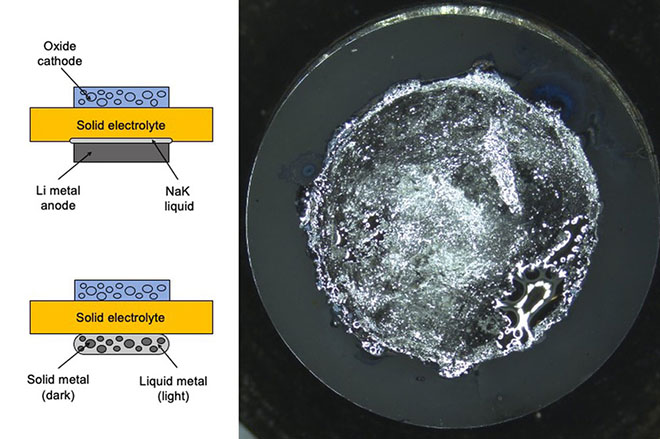Researchers may have found ways to prevent dendrite formation in solid-state batteries. Their findings are described in the journal Nature Energy, in a paper by MIT graduate student Richard Park, MIT Professor Yet-Ming Chiang and researchers at MIT and other institutions.
Chiang explained, “The only way you can reach the energy densities that are interesting is if you use a metal electrode. And while it’s possible to couple that metal electrode with a liquid electrolyte and still get good energy density, that does not provide the same safety advantage as a solid electrolyte does.”
Dendrites form more rapidly when the current flow is higher, which occurs during fast charging. To address this problem, the team made a semisolid electrode in contact with a solid electrolyte material. The semisolid electrode provided a self-healing surface at the interface, rather than a brittle solid surface that could lead to tiny cracks that provide the initial seeds for dendrite formation.
“The motivation was to develop electrodes that are based on carefully selected alloys in order to introduce a liquid phase that can serve as a self-healing component of the metal electrode,” Park says.
In the second version of their solid battery, the team introduced a very thin layer of liquid sodium-potassium alloy in between a solid lithium electrode and a solid electrolyte. They said this approach could also overcome the dendrite problem, providing another avenue for further research.
Chiang said the new approaches could easily be adapted to many different versions of solid-state lithium batteries that are being investigated by researchers around the world. The next step will be to demonstrate this system’s applicability to a variety of battery architectures. Co-author Venkatasubramanian Viswanathan, Professor of Mechanical Engineering at Carnegie Mellon University, said, “We think we can translate this approach to any solid-state lithium-ion battery. We think it could be used immediately in cell development for a wide range of applications, from handheld devices to electric vehicles to electric aviation.”
Source: MIT



















































